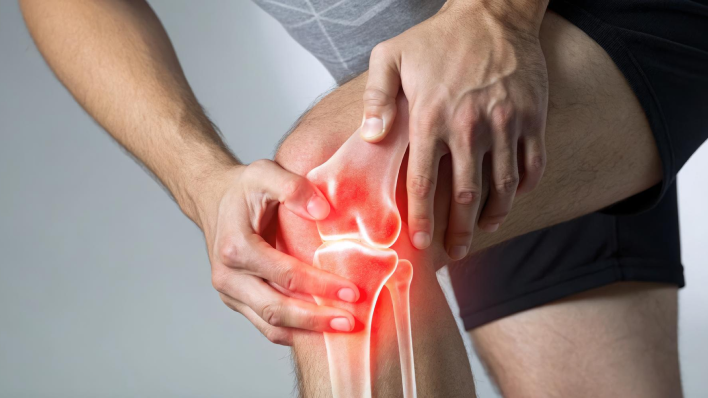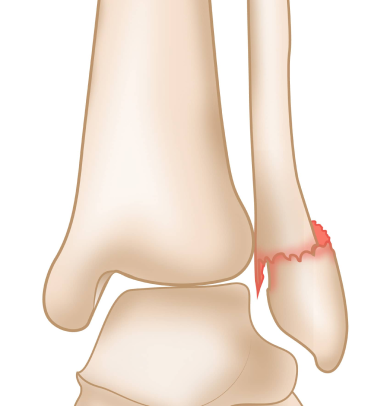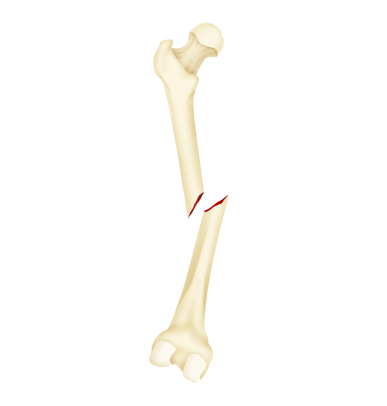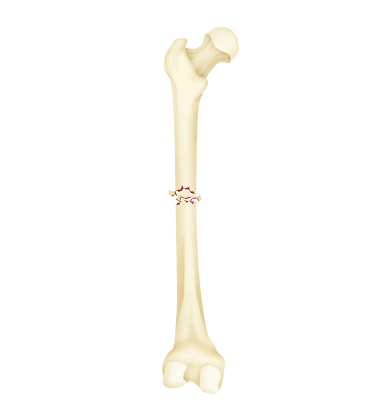Knee Fracture

What is a Knee Fracture?
A knee fracture, commonly referred to as a break in the continuity of the patella bone within the knee joint, characterizes a patellar fracture involving the kneecap. It occurs either due to direct contact with the knee or because one twists the leg with some weight on it. About 1% of fractures in humans cause a knee fracture, which causes severe knee pain and limited leg movement.
At Tarabichi Joint Care, we specialize in diagnosing and treating knee fractures. Our expert team, led by skilled knee surgeons in Dubai, is dedicated to restoring your knee function and alleviating pain.
Anatomy
Common Causes
- High-Impact Trauma
- Osteoporosis
- Direct Blow
- Repetitive Stress
Knee Fractures Types
There are several classifications based on the displacement of bones and the nature of a knee fracture.

Stable (Nondisplaced) Fracture
In this type, the bone may crack or chip but remains aligned with minimal separation (just a millimeter or two). These fractures generally heal well and often do not require surgery.

Displaced Fracture
The bone ends are actually moved out of their normal position. This type usually necessitates surgical intervention to realign and stabilize the bone.

Comminuted Fracture
This fracture involves the bone being shattered into three or more pieces. Treatment may include immobilization or surgery, depending on whether the fracture is stable or unstable.

Open Fracture
In this severe type, the bone breaks through the skin, exposing it to the outside environment. This type carries a high risk of infection and often involves damage to surrounding soft tissues.
Understanding these types can help recognize the severity of a knee injury and the appropriate treatment needed.
When is Treatment Recommended?
Treatment for a knee fracture is recommended when:
Inability to bear weight on the knee: Difficulty standing or walking due to pain or instability in the knee joint.
Visible swelling: Noticeable puffiness or enlargement around the knee area.
Fever and localized symptoms: Having a high temperature, chills, redness, and warmth around the knee joint.
If you experience any of these symptoms after an injury, it is essential to consult a knee surgeon in Dubai for an accurate diagnosis and treatment plan.
Candidates Eligible for Treatment
Candidates for knee fracture treatment include:
- People who suffer a knee injury that results in severe pain and swelling are candidates for knee fracture treatment.
- Athletes or active patients who depend on the stability of the knee for performance.
- Patients with fractures who require surgical intervention to achieve proper healing and recovery.
Symptoms of a Knee Fracture
- Pain
- Swelling
- Bruising
- Limited Mobility
- Visible Deformity
Diagnosis of Knee Fractures
A knee fracture diagnosis typically begins with a thorough physical examination by a healthcare professional.
This may be followed by imaging studies, such as X-rays or MRIs, to assess the severity and type of fracture. At Tarabichi Joint Care, we utilize advanced imaging techniques to ensure a precise diagnosis.
Knee Pain Treatment in Dubai
The treatment for a knee fracture depends on the severity and location of the injury.
Non-Surgical Treatment
For minor fractures, like hairline breaks, non-surgical treatment is often adequate. The main strategy is immobilization, which may include:
- Cast or Splint Application: A cast or splint limits movement and keeps the bones aligned during the healing process, typically lasting several weeks.
- Weight Bearing Guidance: Some fractures allow the patient to bear weight within a cast on the involved leg, while others may not support standing at all.
Surgical Treatment
Surgical intervention is necessary for fractures that involve displacement, complications such as dislocations, or open wounds. Surgical options may include:
Internal Fixation: This method involves realigning fractured bones and stabilizing them with hardware.
Intramedullary Nailing: A specially prepared metal rod is placed along the canal of the femur for stabilizing the fracture. The rod is then locked at both ends by means of screws to keep the bone fragments held together.
Plates and Screws Fixation: The doctor places the bone ends to their anatomical position and fixes them by using plates or screws on the external surface of the bone.
External Fixation: Here, metal pins or screws are placed inside the femur and tibia, and the ends are connected with an external device. This allows the fragments of the bone to remain in place while the bones align and heal properly.
In comminuted fractures, where bone fragments are too small to be reattached, the surgeon may remove these fragments and reattach the patellar tendon to the remaining bone.
For elderly patients, where healing may be delayed, a bone graft may be utilized. This involves taking bone tissue from the patient or a tissue bank to promote healing.
Overall, the choice between non-surgical and surgical treatment is made after careful evaluation by a qualified knee surgeon Dubai, ensuring the best possible outcome for each patient.
Choose Tarabichi Joint Care for Knee surgery Dubai
Knee fractures can be severely debilitating, but with the right treatment and rehabilitation, one can recover. Our Dubai physiotherapy and rehabilitation center offers specialized programs to aid in recovery.
Our knee surgeons in Dubai are dedicated to offering you personalized care based on your needs at Tarabichi Joint Care. Therefore, if you suspect a fracture or feel pain in the knee, do not hesitate to contact us for an all-inclusive evaluation and treatment plan.
FAQ’S
Many individuals can return to sports with appropriate treatment and rehabilitation; however, it’s essential to follow your doctor’s advice.
Tarabichi Joint Care offers comprehensive evaluation and treatment for knee fractures and other knee-related issues. Contact us today to schedule a consultation.
Treatment typically begins with a consultation and imaging studies to confirm the fracture. Depending on the severity, options may include immobilization, physical therapy, or surgical intervention such as ORIF or arthroscopy.
Potential complications may include:
- Infection at the surgical site.
- Improper healing of the fracture.
- Stiffness in the knee.
- Persistent pain.
Before treatment, patients should prepare their medical history, current medications, insurance information, and any previous imaging studies.
